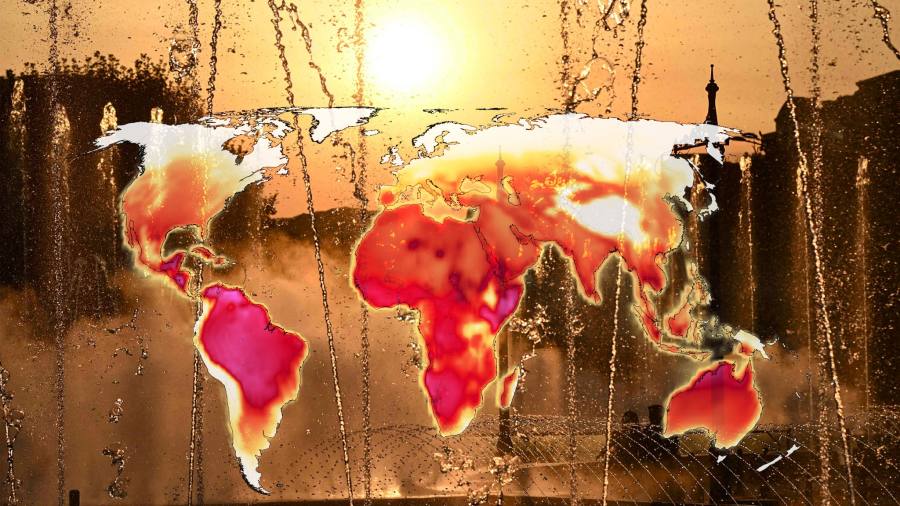[ad_1]
Credit: CC0 Public Domain
Less intense average daily precipitation, more intense and localized extreme events. This is what the future climate scenarios for the Eastern Alps indicate, according to the study “Evaluation and Expected Changes of Summer Precipitation at Convection Permitting Scale with COSMO-CLM over Alpine Space”, published by the CMCC Foundation in the journal Atmosphere.
The research is carried out within the framework of the European project H2020 EUCP (European Climate Prediction system) and contributes to the work of the international scientific community for the development of climate models that can help decision-makers to properly assess extreme events and their evolution. take climate change into account, with the ultimate goal of limiting its negative impacts on societies and economies.
The plans and measures of adaptation to climate change existing in the world are based on future scenarios made available to decision-makers by the research world. These scenarios currently provide a good representation of extreme events on a daily scale, but still have limited predictive capabilities on an intraday timescale. For some sectors, such as infrastructure, there are not enough resources to develop adequate policies for adapting to climate change: very intense and rapid precipitation, concentrated in small areas and in a few hours, can have strong effects. impacts on infrastructure, causing overflow of water bodies and flooding, undermining systems and revealing the inability of sewers to handle large water flows. Some extreme events can last a few hours and affect very small areas (on the order of a few kilometers). The need to understand such phenomena is even greater in certain particular geographical contexts, such as the Alpine space, where extreme rainfall events, typical of the summer season, can have serious consequences.
“Over the past decades, there has been an ongoing debate among climatologists on the added value of very high resolution climate simulations, representing the next generation of regional climate models,†explains Paola Mercogliano, director of REMHI (Regional and Geographic Models). – Hydrological Impacts Division) at the CMCC Foundation.
“These climate simulations, which are performed with regional models at very high spatial and temporal resolution, have a high computational cost and require significant investments in terms of research time. Given the high costs, the scientific community is wondering if this is the right way to go to better support policies for adapting to climate change. Our study demonstrates the added value of this direction and confirms that it is worth investing in it, especially in areas with complex orography or where uncertainty is still great, such as the Alps. new generation models, we can not only observe what is happening at very high resolution in terms of daily average precipitation, but we can also do statistical analyzes on an intraday basis, looking at different times of the same day. capable of providing information on the effects of climate change on hourly precipitation: results that would have been unthinkable just two or three years ago. “
The study shows a better representation of the frequency and intensity of precipitation in very high resolution simulations (“if convection allows”) than in lower resolution simulations, in particular at the infra-scale. Daily.
“In agreement with the existing literature, our preliminary results for the alpine zone in the summer season show a decrease in average daily precipitation, especially at high altitudes, and localized intensifications of extreme events along the eastern Alps. It will rain less frequently but more intensely. , both on the daily time scale and on the hourly scale. Given the increased intensity of these events, it is clear that understanding the distribution of precipitation on an hourly scale can provide great added value in our support to decision-makers â€, explains Marianna Adinolfi, CMCC researcher and lead author of the article.
New generation climate models are developed and applied by the CMCC Foundation in several international projects and contexts. A few examples: the study of urban heat waves and the evolution of rainfall extremes in support of adaptation policies at the urban scale: so many contexts that will benefit from having simulations on an hourly scale.
In addition, to support adaptation policies, the CMCC has created products such as climate scenarios for Italy, which make it possible to visualize on maps the climate expected until the end of the century using models. high-resolution climate, and climate services such as Dataclime, which provides climate analysis at multiple temporal and spatial scales.
This study was carried out as part of the Horizon 2020 EUCP – European Climate Prediction system research project, in which the CMCC Foundation is participating. The project aims to support the scientific community in the development of high-quality, European-wide climate data and projections to provide policy makers, stakeholders and planners to address the challenges and opportunities brought by climate change.
Understanding the future distribution of species: new data for biogeographers
Marianna Adinolfi et al, Assessment and expected changes in summer precipitation at the convection scale with COSMO-CLM over the Alpine space, Atmosphere (2020). DOI: 10.3390 / atmos12010054
Provided by the CMCC Foundation – Euro-Mediterranean Center on Climate Change
Quote: Here is the new generation of climate models: The future of precipitation in the Alps (2021, February 12) retrieved on December 21, 2021 from https://phys.org/news/2021-02-climate-future-rainfall-alps . html
This document is subject to copyright. Other than fair use for private study or research purposes, no part may be reproduced without written permission. The content is provided for information only.
[ad_2]



